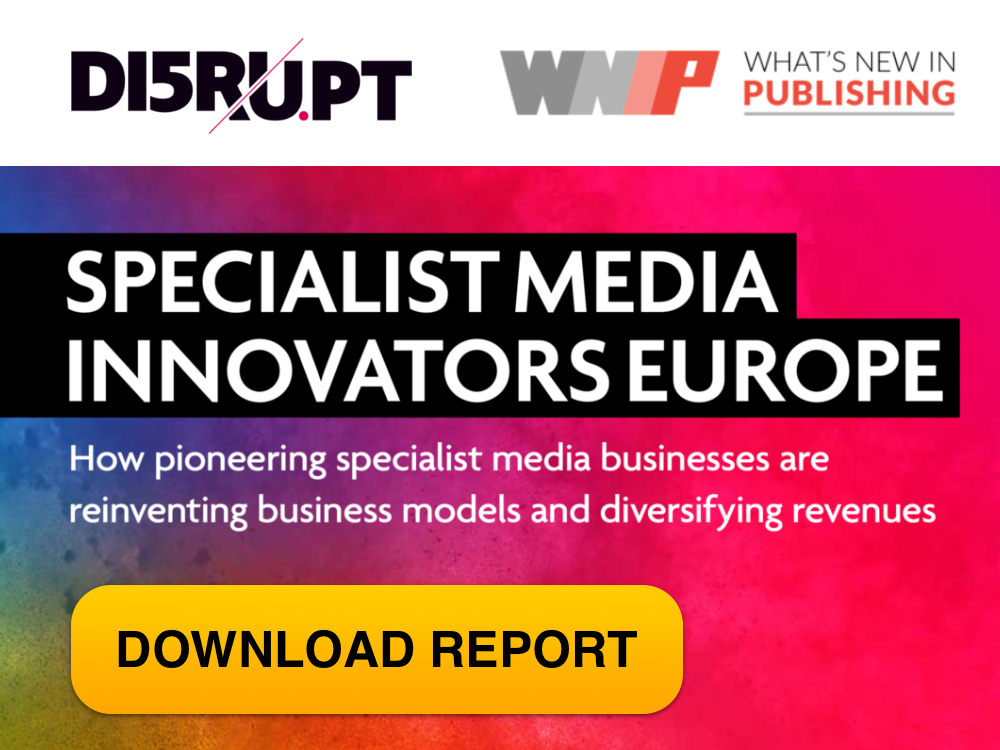|
Getting your Trinity Audio player ready...
|
2019 has seen a great deal of innovation from publishers looking for sustainable business models and revenue streams which will support them as advertising continues to decline.
What’s New in Publishing attended the FT’s Future of News Europe event in Amsterdam, which brought together leading publishers from around Europe to discuss how the continent’s news outlets are planning for the future, how to secure growth, and promote quality journalism for the next generation.
For the panel on ‘New models for the news business’, The FT’s Chief Data Officer Tom Betts, Tortoise’s Editor Polly Curtis and Nesta’s Director of the Future News Fund Valerie Mocker came together with Madhav Chinnappa, Google’s Director of News Ecosystem Development, to discuss how their own organisations are adapting for the future.
Here are some key takeaways from these four industry leaders on what the outlook is for many of the new models that news businesses are experimenting with.
Having a sense of direction at the FT
The Financial Times is an oft-cited example of a publisher who has successfully – and sustainably – grown reader revenues as a core part of their business model early on. But Chief Data Officer Tom Betts warned that the idea of diversification can be a distraction when planning for the future.
“We have to be careful about this question of diversifying, because in my experience, change is really difficult,” he said. “To move from a largely advertising-funded industry to one of reader revenue, if we’re going to have that experimental mindset, we have to know what we’re experimenting towards.”
Betts stated that in 2007 when they first launched their subscription model, they didn’t have a 10-year plan or anything written in stone. Instead, it was their sense of direction which helped them chart a sustainable course.
“We’ve changed course, but we’ve been very clear that growing subscriptions is the primary source of revenue growth for the business,” Betts explained. “That’s been really important in focusing hearts and minds across the organisation: commercial, editorial, technology, product, data, everybody is pulling in a common direction.”
For the FT, that ethos still holds true, even when looking at what the next decade may hold. Betts explained that we have the same problem today that we did a decade ago, that although we may have some hunches about what the future holds, even the experts can’t say what news consumption will look like in five years, such is the pace of change and uncertainty in the industry. So how is the publisher preparing for the future?
“The capabilities that are important, and the conditions that we have built our business on, is the ability to really understand our readers, audiences and customers,” Betts said.
Being able to gather the right data and feedback from these readers is also crucial to the publisher. “When we’re faced with choices of whether to go this way or that way, we have an evidence base that we can work with to help make some really difficult strategic decisions,” he explained.
“When you’re talking about things that are a part of the business model…you need that insight to be able to make some of these difficult decisions, and not just blindly push forward in a world where we can’t see exactly what the future is going to hold.”
Saving democracy at Tortoise
‘Slow news’ publisher Tortoise has been an emerging star this year, with its inclusive membership model claiming nearly 20,000 members within the first six months of its launch. Tortoise Editor and Partner Polly Curtis explained that their mission had informed their business model, and its early evolution.
“There’s now a divide between the affluent, engaged, journalistically-driven audiences who now have great options that they will pay for, and everyone else who has quite a polluted, social media-driven environment to navigate,” she said, citing the FT and the Guardian as examples.
“So at the heart of it is, do we want to save our industry? Yes, and there are models that are emerging that are doing that. But actually do we want to save the importance of journalism to democracy, the pure essence of journalism?”
Curtis argued that although some groups are being served well through quality journalism, big audiences are still getting really poor quality information, which is leading to populism and misinformation. At Tortoise, they’re aiming to combat that issue in a different way.
Firstly, as the name suggests, Tortoise is focused on a more considered, ‘slow’ journalism. “We’re not competing on those timescales that everyone else is competing on…we’re going slow and publishing things where we really think we’ve created something that will help our members understand better,” explained Curtis.
“We’re also open, so we’ve opened up our newsrooms to our members via something called a Thinkin; an editorial conference where we invite our entire membership in.” Tortoise does these Thinkins up to four times a week, with 50 people joining for each one to discuss issues, which in turn feed through to the journalism.
With almost 30,000 members joining since April, Tortoise faces some unique challenges when it comes to scaling up. A member-led model works well like this on a small scale, but is it one that will continue to work as the business gets larger?
“The really important thing that changed in terms of scalability – but actually in terms of quality – was about three months in, we took a look at our membership,” Curtis said. “We had 7,000 members, they were really young, there was a really big appetite from young people for this. But they were really professional, really London-based.”
“Had we just created another one of those echo chambers, media bubbles that we’re all trying to escape? That was a real risk to the whole model.”
At this point, Curtis and the Tortoise team launched the Tortoise network, and worked with fundraising corporate partners that pay for the memberships, then distribute them via partner charities and organisations. “These memberships get distributed to people who don’t usually have a voice in the news, who don’t usually have a seat at the table,” she explained. “And that’s how we’re diversifying our membership, through partnerships with schools, and university access.”
“We need a sustainable model, so we have to make every membership a funded membership. We can’t just give it away. But we have to work ten times as hard to make sure it’s diverse, because it’s quite a high bar we’re asking people to engage with.”
Solutions in unexpected places with Nesta
Nesta’s Future News Fund is a pilot project backed by the UK government, looking for new approaches to develop financially sustainable models for journalism. Director Valerie Mocker explained that their approach when it comes to new models for the news business is that its’ “always best to test.”
“You’re never going to find your answers in roundtables…you need to experiment, and ideally you need to do this on a grand scale, not with just one organisation” she said. “You need to create a whole network of organisations that are experimenting and sharing their findings, and that’s what we’re planning, to find really brave and bold new ideas.”
Mocker said that in other areas Nesta has worked in, funding innovation has been successful in coming up with new and interesting models because “the solutions are often the most unexpected ones.”
“We think that there will be very unexpected, very imaginative solutions to the problems that we try to solve in this industry. But when we think about where we need to start, and one of the things that business models need to have baked into them is trust. Because in this industry, we don’t just have a truth challenge, we have a trust challenge.”
Mocker suggests that a good starting point for news organisations is to work on making their processes more transparent. Most audiences have little understanding of how stories are chosen or put together, or how news comes about, and if this is improved, solutions may present themselves elsewhere.
Silver shrapnel with Google
Madhav Chinnappa, Google’s Director of News Ecosystem Development, has been working at the intersection of partnerships and technology, including projects like the Google News Initiative, for almost a decade. He knows as well as anyone how much the internet has disrupted the business model of news.
But Chinnappa is optimistic about the future. “I believe that we’re now in a phase of reinventing the business models, plural,” he said. “It’s really important that that plural is there, because there is no one singular solution.”
Chinnappa outlined a number of different ways that Google is helping the news ecosystem, despite its vilification in industry media. 8 billion clicks a month are sent to European news publishers to help drive audiences and subscriptions, and other initiatives have borne fruit recently, such as the YouTube Player for Publishers programme, and their Subscribe with Google product which is “trying to take the friction out of paying for content.” But he acknowledges that they are still trying to do more.
“We’re trying to take this globally because the cultural attitude that you take to innovation and business models I believe is deeply, deeply important,” he explained, emphasising that Google is trying to build a dialogue of collaboration with publishers. “I do believe that the business model challenges for news are profound, and probably the most important to the sustainable health of the news ecosystem.”
“I also do not believe that there is a silver bullet or a Holy Grail. Diversified revenue streams are the way to a sustainable ecosystem. There is no silver bullet, but there is silver shrapnel; we just need to do as many things as we can.”



